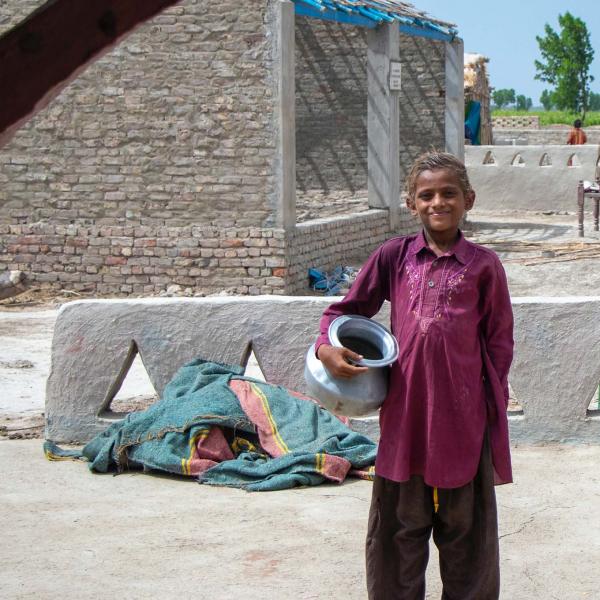The amount spent on schools is a source of frequent controversy. So, where does all the money for educating the country's children go?
It's a fact that spending on schools in England is much higher than it was 20 years ago. But that's not the full picture in a country which has seen a population boom coincide with a squeeze on public spending.
Spending per pupil is actually lower than it was in 2010 in today's prices - as is the case across the rest of the UK.
As a result, funding decisions - which have favoured poorer and younger pupils in recent years - are watched closely, as Chancellor Philip Hammond discovered when his announcement of £400m for schools to spend on "little extras" was met with anger.
Where the money goes
Spending on schools is not shared out equally. The amount spent on each primary school child in England in 2017-18 was £4,700, compared with £6,200 for secondary school children.
However, priorities have shifted, with per pupil spending on primary schools increasing by 135% since 1990 after accounting for inflation, compared with 86% for secondaries. Early years education has also become a growing area of spending, but remains relatively small.
There has been less money for older children, with spending on further education students aged 16-18 up only 10% since the early 90s.
All of this money for nurseries, schools and colleges comes from the government, although most of it is spent via local authorities and other bodies.
Spending on nursery age children has doubled
One of the biggest changes in education spending has been for very young children.
Parents of all three and four-year-olds are now entitled to 15 hours a week free childcare, for 38 weeks a year.
And since 2017, all working parents in England have been allowed 30 hours a week, although this is not always available and there has been criticism of nurseries adding "extras".
The expansion of free childcare has seen spending per child double between 2004 and 2017, from £1,600 to £3,200 in today's prices.
The population boom
Day-to-day spending on schools in England was £42bn in 2017-18 - about the same as in 2009-10, after accounting for inflation.
However, over this time the number of schoolchildren has grown by 700,000 - more than the population of a city like Sheffield. As a result, spending per pupil has fallen 8% in real terms since 2009-10. It is now due to be frozen until 2019-20.
Class sizes may also be growing, as the number of pupils per teacher rose from 15 in 2010 to 17 now.
Looking across the UK, real terms cuts in school spending per pupil have been largest in Northern Ireland (9%), where pupil numbers have also grown. Cuts have been smaller in Wales (5%) and Scotland (3%), where pupil numbers have been steady.
Spending on deprived schools
Schools with a high proportion of children from deprived backgrounds - those eligible for free school meals - receive more money per pupil than others.
This gap is about 30% per pupil between the schools with the highest and lowest number of poorer children, following reforms introduced by Labour and the Conservative-Lib Dem coalition government.
Between 1999-2000 and 2013-14, up to 25% of this extra spending went on recruiting more teachers and paying higher salaries.
A larger share - 35% at secondary school and nearly 50% at primary schools - was spent on teaching assistants and non-teaching staff.
The total number of teaching assistants in England rose from 80,000 in 2000 to about 260,000 in 2017.
The squeezed teens
The number of young people continuing in full-time education after the age of 16 has more than doubled - from four out of 10 in the mid-1980s to eight out of 10 now. This is largely because young people in England now have to continue in education or training until they are 18.
However, the reduction in per pupil spending has been greater for this group than others, with sixth forms and further education colleges seeing the smallest increases over the past 30 years.
Among sixth formers the amount available for each pupil has fallen 20% in real terms, from £6,300 a year in 2010 to £5,000 in 2017 - lower than at any point since at least 2002.
Funding per young person in further education colleges is at about the same level as it was in 2006. It had been 50% higher than in secondary schools, but is now 8% lower.
The tuition fees boost
Although controversial, tuition fees have led to an increase in funding at universities. For each full-time student, English universities received about £9,400 in 2017-18.
This is up nearly a fifth in real terms since 1990, despite the number of undergraduates more than doubling.
The government provides most of this funding for higher education up front, either in the form of grants to universities for teaching, or loans to students for tuition fees.
Over the long run, the cost to government is lowered as student loans are repaid, with graduates paying more if they earn more. However, most graduates won't repay all of their student loans by the time they are cancelled after 30 years - amounting to a government subsidy for graduates.
What difference does spending make?
The education of young people in England who turned 21 in 2015 will have cost an average of about £73,000. It is more for those who went to university.
This comes against a background of big changes over the past 20 years.
Just a decade ago, about £6,000 less was spent educating children from poorer families than it was for those who were richer. There is evidence that suggests increased spending on education leads to higher earnings later in life and that this change of focus could boost the life chances of more children.
But hard decisions do have to be made and 16- to 18-year-olds have clearly borne much of the cuts to education spending.
Calculating the effects of such choices is not easy. The impact of decision made now may only become clear years later, as children enter adult life.
This article was first published by the BBC and is reproduced here full with permission.









